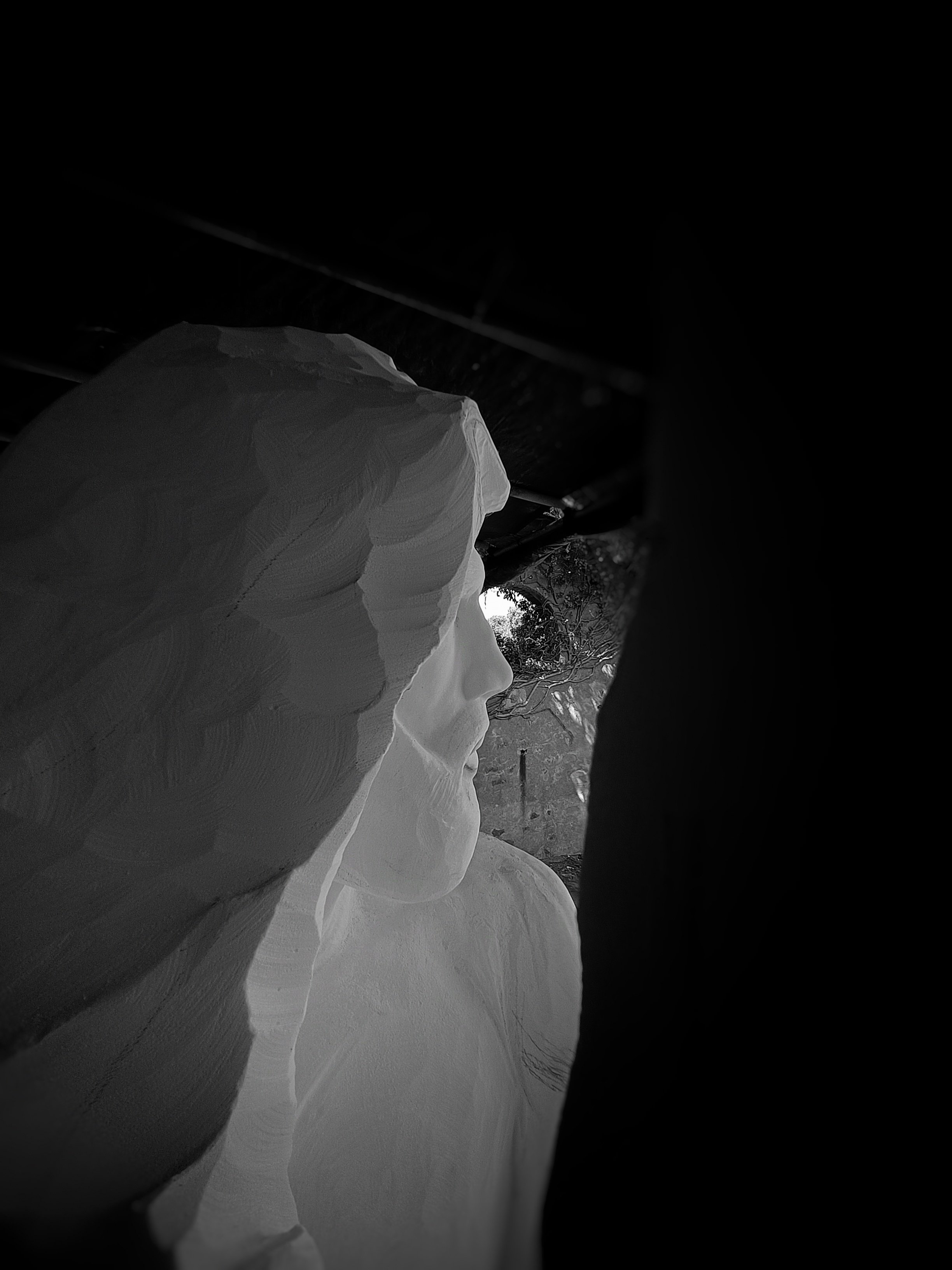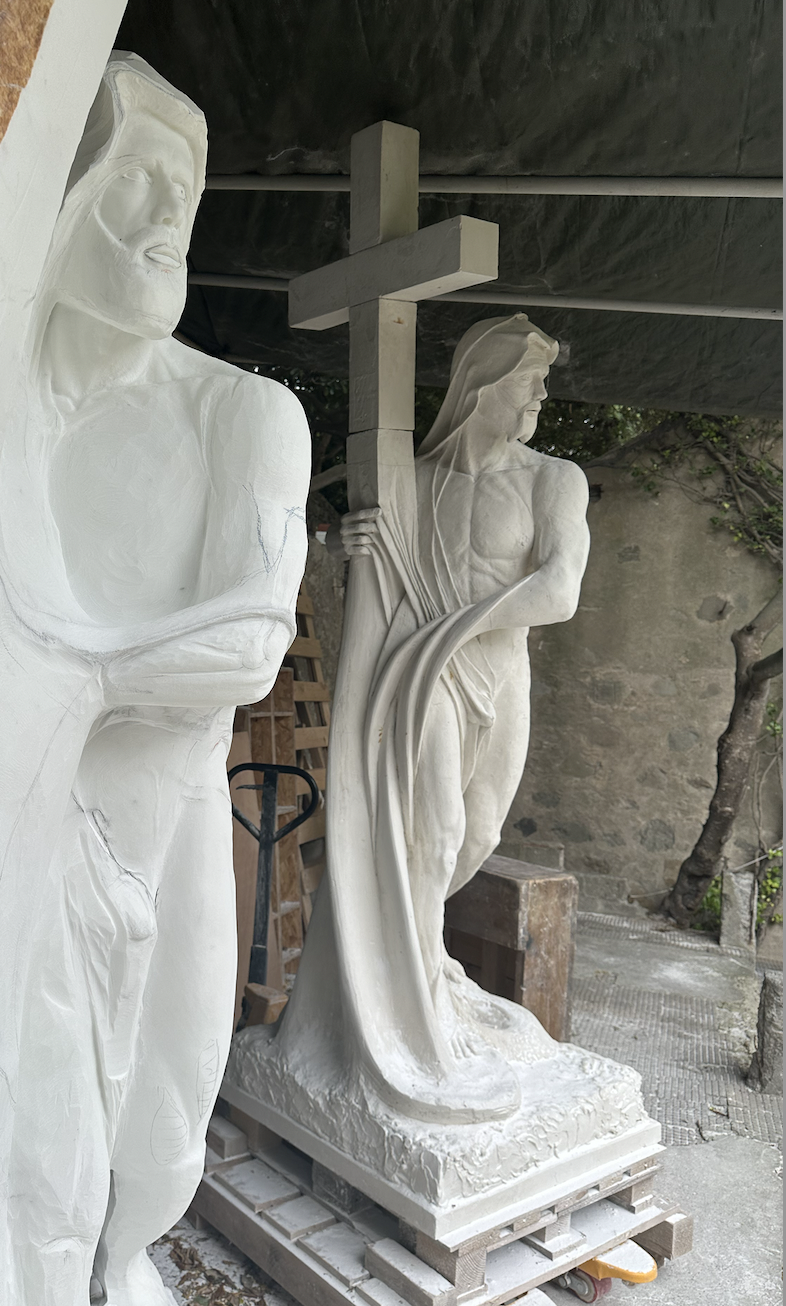SYMBOLOGY
THE Third Christ Carrying the Cross Giustiniani sculpture, is a profound representation consisting of three key elements: the Man/Christ, the Cross, and the Veil. We aims to delve into the symbolism behind each component and explore their significance in syncretism.
The Man /
Christ
In syncretism, the Christ is depicted as a man who achieves enlightenment by elevating the substances of his body to anoint the pineal gland. Through this process, he evolves from a simple individual to someone with heightened consciousness. This superior awareness enables him to comprehend the true nature of reality and recognize himself as a vessel of eternal essence. The Christ understands that energy shapes the fabric of reality and holds dominion over matter. As a sculpture, the Third Christ Carrying the Cross Giustiniani is not merely a static figure but portrays a dynamic Man/Christ actively moving forward with intention, knowledge, and decision-making. He projects his actions into the physical realm, unburdened by concerns of weight or limitation.
The
Cross
Contrary to its traditional religious connotation, the cross in this sculpture is linked to its original ancient archetype. It symbolizes a man who interacts with space and time, possessing the ability to measure cardinal points and observe all directions—up, down, left, and right. Essentially, the cross becomes a tool employed to navigate and understand the natural world. Therefore, it is not depicted as a weight or standard but positioned to the side, signifying the projection of the Man/Christ into the world.
The
VEIL
The veil represents the profound action and interaction of the Man/Christ with both the visible and invisible forces that are often concealed from ordinary perception. It embodies the immaterial essence that emanates from the Man/Christ and influences the ethereal realm. Through this connection, the Man/Christ molds and gives form to matter. At certain moments, the boundaries between the Man/Christ, the Cross, and the Veil blur and merge, revealing both material and spiritual aspects.
symbology
Third Christ Carrying the Cross, Giustiniani sculpture encapsulates rich symbolism within its three principal elements: the Man/Christ, the Cross, and the Veil. Together, they represent the journey of an individual who attains enlightenment, transcending ordinary limitations and acquiring a profound understanding of reality. The sculpture invites contemplation on the interplay between the physical and spiritual realms, showcasing the transformative power of consciousness and the ability to shape one's existence.




